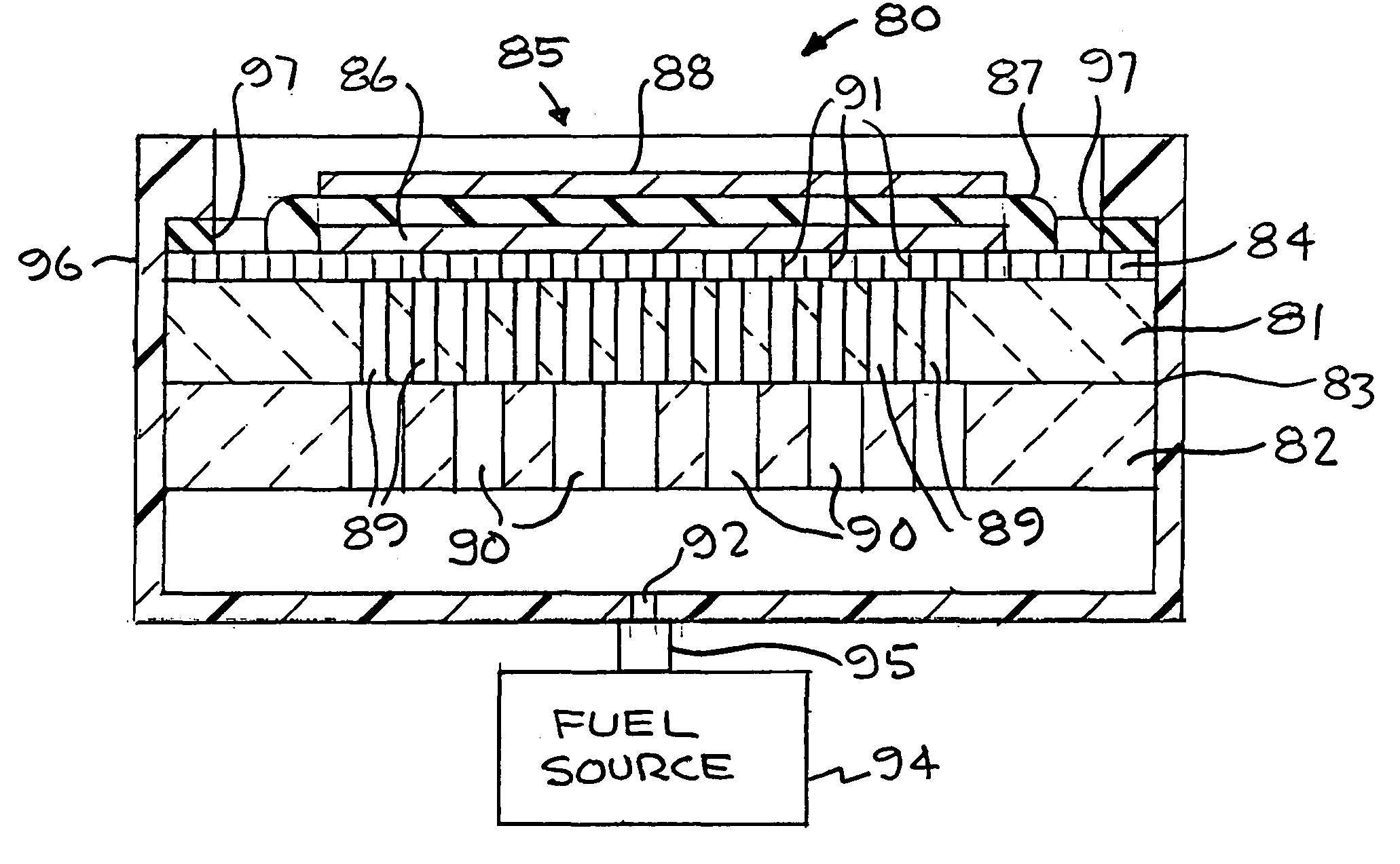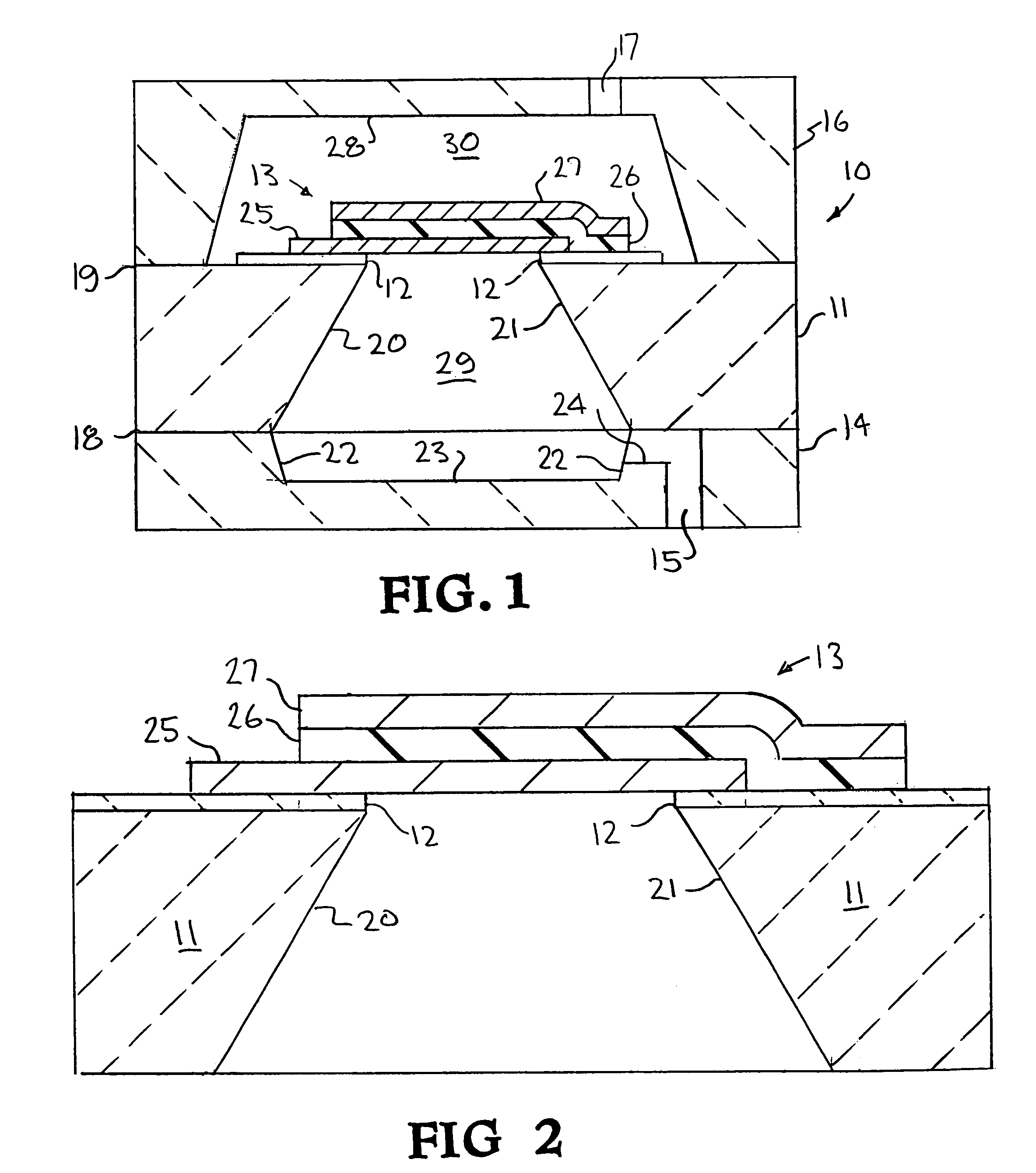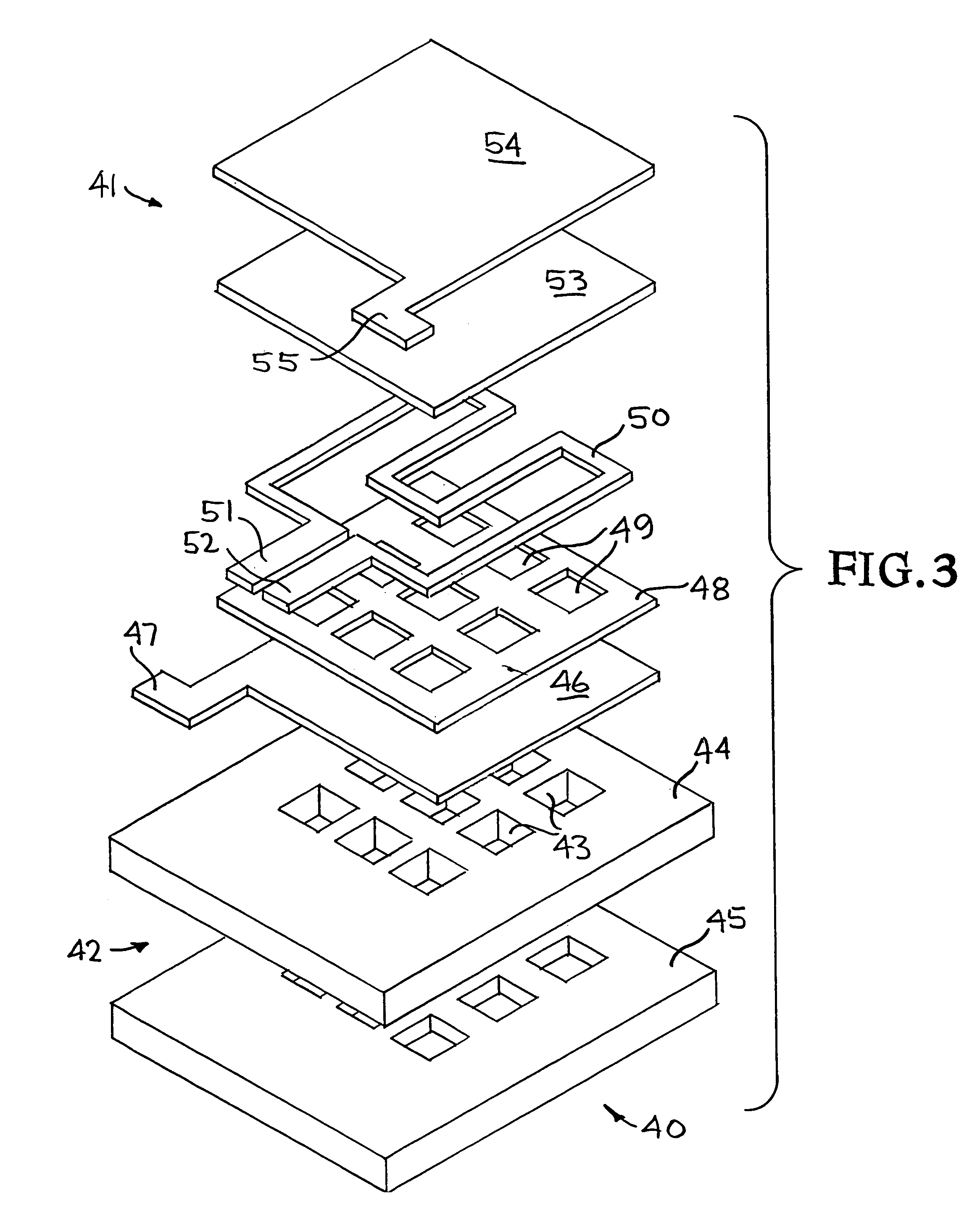Solid oxide MEMS-based fuel cells
a fuel cell and solid oxide technology, applied in the field of fuel cells, can solve the problems of high cost, large system volume, and high cost of rechargeable and primary portable power sources with limited mission duration, and achieve the effects of reducing the cost of fuel cell production
- Summary
- Abstract
- Description
- Claims
- Application Information
AI Technical Summary
Benefits of technology
Problems solved by technology
Method used
Image
Examples
Embodiment Construction
[0027]The present invention is a MEMS-based thin-film fuel cell or stack of fuel cells of either a solid oxide fuel cell (SOFC), a solid polymer fuel cell (SPFC), or a proton exchange membrane fuel cell (PEMFC), utilizing electrode / catalyst / electrolyte or electrode / electrolyte materials which enable the combination of a fuel and oxidant at elevated temperatures to produce continuous electric current. Fuel manifolds and microflow channels are formed in the host structure / substrate by MEMS-based technology and the electrode / electrolyte / electrode, with or without catalyst layers are formed along with resistive heaters and integrated control circuitry by thin-film deposition technology and microfabrication approaches in combination with MEMS fabrication techniques. Thus, the invention provides a miniature power source composed of fuel cells which yield zero emissions (when operated on hydrogen and air). The electrical current generated from each cell is drawn away with an interconnect a...
PUM
| Property | Measurement | Unit |
|---|---|---|
| Thickness | aaaaa | aaaaa |
| Thickness | aaaaa | aaaaa |
| Length | aaaaa | aaaaa |
Abstract
Description
Claims
Application Information
 Login to View More
Login to View More - R&D
- Intellectual Property
- Life Sciences
- Materials
- Tech Scout
- Unparalleled Data Quality
- Higher Quality Content
- 60% Fewer Hallucinations
Browse by: Latest US Patents, China's latest patents, Technical Efficacy Thesaurus, Application Domain, Technology Topic, Popular Technical Reports.
© 2025 PatSnap. All rights reserved.Legal|Privacy policy|Modern Slavery Act Transparency Statement|Sitemap|About US| Contact US: help@patsnap.com



